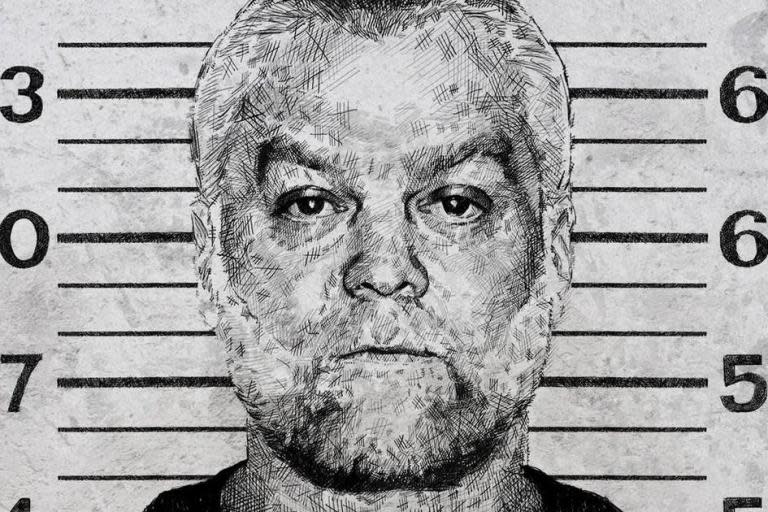Making a Murderer: Part 2 review – Netflix's mystery is intriguing but meandering
Few series have gripped us quite like Making a Murderer. Ever since Netflix's true-crime documentary shone a spotlight on the murder of Theresa Halbach and the subsequent convictions of Steven Avery and Brendan Dassey, media organisations from around the world have feverishly covered any ongoing developments (with this very publication writing numerous stories on the curious case). So popular has it become, in fact, that the White House was forced to issue a statement on why Avery and Dassey could not be pardoned.
Guilty or not, Avery is painted here as a wrongly imprisoned man, and hearing his soft voice again – with that strong Wisconsin accent – in Part 2 is a strangely reassuring experience, akin to catching up with an old friend who has finally returned from a turbulent trip away. “I didn’t think all these people would care about this little thing,” he says, midway through the premiere. For a moment, it feels as if nothing has changed; a montage of self-congratulatory news clippings later and you realise little’s the same.
Part 2 picks up where the first ended, chronologically going through the events of the past three years. Having been a fan of the first series, the renowned defence attorney Kathleen Zellner decided to come on board. “You would be stupid to hire me if you weren’t innocent,” she sternly tells the camera, and it’s hard not to believe her, so matter-of-fact is her delivery. Realising what watchable company Zellner makes, filmmakers Laura Ricciardi and Moira Demos place her at the series’ heart, Zellner coming off as a determined detective searching for a needle in a haystack (or, as is the case, a blood splatter on a car door).
Unfortunately, though, as Zellner’s team comb through the evidence, it becomes clear how difficult uncovering new information on a decade-old case can be. Where the first series was a gripping dissection of a case, with every episode featuring a bombshell revelation, the miniscule findings this time around can be underwhelming, pushing the narrative forward in baby steps. Compared to moments such as Avery’s former lawyers, Dean Strang and Jerry Buting, discovering an old vial of Avery’s blood had been tampered with, Zellner’s discoveries simply cannot compete.
As such, there’s a reliance on other material to bulk out the 10 episodes, such as detailed explanations of the American legal system and intimate observations about the effect fame has had on Avery. One particularly fascinating moment comes midway through the season, when Avery’s new girlfriend enters the fray. “I knew there would be another season of the documentary and I knew I would be in it,” she says before meeting Avery for the first time. Moments later, a cruel twist of fate leaves him heartbroken, exemplifying just how naïve this leading Netflix star is.
This series also spends more time with Avery’s mother, Delores. She’s still ticking along, hoping that her son will one day walk free. We see her celebrate a birthday, have surgery and tearfully visit her son in prison. It’s all very moving. Yet, nice as it may be to catch up with Momma Avery, these vignettes are often mawkish, and give the narrative little lustre.
Then there’s Dassey’s case. As has been well publicised, Avery’s nephew and alleged co-murderer was almost freed from jail before the decision was appealed and ultimately overturned. Unlike Zellner, Dassey’s legal team – two bubbly lawyers – rarely do any actual investigating, instead spending their time further convincing us that Dassey’s confession had been coerced by police officers. Again, we’re retracing steps as the series struggles to offer any new information about the case, so the filmmakers compensate by focusing on the lawyers’ acute observations about the justice system. At times, it feels more like a TED talk than a true-crime series (one episode even begins with the duo giving a power-point presentation).
And that’s the ultimate problem with Part 2. Where the first was a speedy exploration of a riveting case, replete with thrilling cliff-hanger endings that even the best scripted dramas fail to achieve, this second batch of episodes are a slow-dive through an already well-documented moment in time. Seeing every intimate step first-hand is intriguing to begin with, but too often the episodes feel flabby and meandering. Things pick up as new suspects are drawn in, yet this becomes somewhat of a moot exercise until much later into the season. Ken Kratz – the first series’ villain – makes a reappearance, but doesn’t present the same strong opposition (he’s too busy on a book tour). You can easily imagine Part 2 being condensed into five engrossing hour-long episodes that could have retained the same momentum that made Making a Murderer so popular.

 Yahoo News
Yahoo News 

